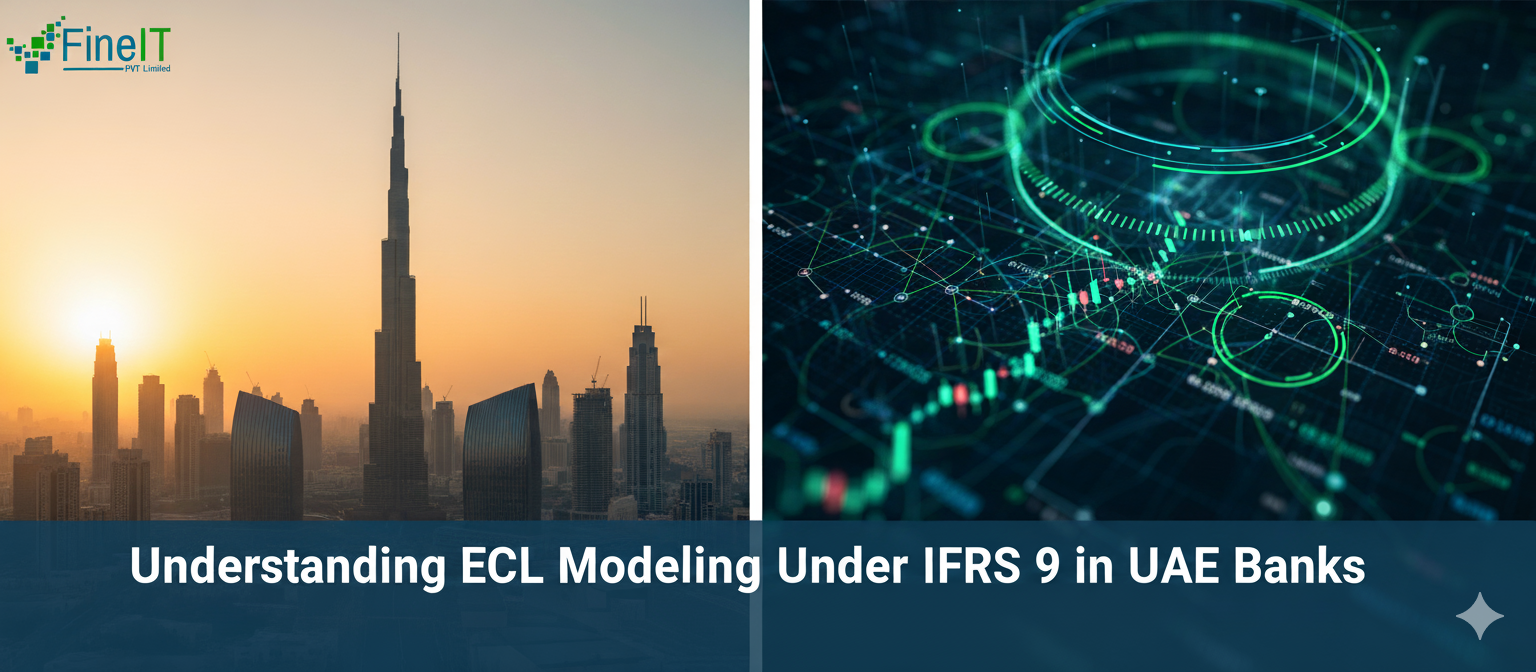The implementation of IFRS 9, particularly its Expected Credit Loss (ECL) model, has marked a significant shift in how financial institutions, including those in the UAE, account for loan losses. Moving away from an incurred loss model, IFRS 9 mandates a forward-looking approach, requiring banks to recognize expected credit losses over the lifetime of a financial instrument. For UAE banks, this presents both universal challenges inherent to IFRS 9 and specific considerations stemming from the regional economic landscape and the prevalence of Islamic finance.
The Core of IFRS 9’s ECL Model
At its heart, the IFRS 9 ECL model revolves around three stages of credit deterioration:
- Stage 1 (Performing): For financial assets where there has not been a significant increase in credit risk since initial recognition, banks recognize 12-month ECLs. This covers potential defaults within the next year.
- Stage 2 (Underperforming): If there has been a significant increase in credit risk since initial recognition, but not yet a default, banks recognize lifetime ECLs. This reflects the potential for default over the entire expected life of the instrument.
- Stage 3 (Non-performing/Defaulted): For financial assets that are credit-impaired (i.e., default has occurred), banks also recognize lifetime ECLs, similar to Stage 2, but with specific recognition of the impairment.
The calculation of ECLs typically involves three key components:
- Probability of Default (PD): The likelihood that a borrower will default on their obligations.
- Loss Given Default (LGD): The proportion of the exposure that a bank expects to lose if a default occurs.
- Exposure at Default (EAD): The total exposure the bank expects to have to the borrower at the time of default.
These components are then discounted to their present value using the original effective interest rate.
Key Challenges for UAE Banks
While the principles of IFRS 9 are global, UAE banks face unique challenges in their ECL modeling:
Data Availability and Quality:
Historical Data: Robust ECL models require extensive historical data on defaults, recoveries, and macroeconomic factors. While UAE banks have made strides, comprehensive, long-term, granular data can sometimes be a hurdle, especially for newer product lines or segments.
Forward-Looking Information and Scenario Analysis:
IFRS 9 demands a “reasonable and supportable” forward-looking view. This requires banks to develop multiple macroeconomic scenarios (e.g., base, optimistic, pessimistic) and assign probabilities to each. Developing these scenarios consistently and integrating them into ECL calculations is a complex exercise, particularly given global economic uncertainties.
Definition of “Significant Increase in Credit Risk” (SICR):
Defining clear and consistent triggers for moving an exposure from Stage 1 to Stage 2 is critical. UAE banks need to establish robust qualitative and quantitative criteria, which can include payment holidays, changes in external ratings, or sector-specific risks.
Modeling Granularity and Complexity:
ECL models must be granular enough to reflect the diverse portfolios of UAE banks, ranging from retail mortgages and personal loans to large corporate exposures and project finance. This often requires different modeling approaches for different asset classes.
Integration with Risk Management Systems:
ECL calculations cannot be a standalone exercise. They must be deeply integrated with existing credit risk management frameworks, data warehousing, and reporting systems to ensure consistency and efficiency.
Skilled Personnel and Resources:
Developing, validating, and maintaining sophisticated ECL models requires a team with strong quantitative skills, knowledge of credit risk, economics, and IFRS 9 accounting principles. Sourcing and retaining such talent can be a challenge.
Specific Considerations for Islamic Banks
Islamic banks in the UAE operate under Sharia’a principles, which add another layer of complexity to IFRS 9 implementation:
- Nature of Contracts:
- Islamic finance instruments (e.g., Murabaha, Ijarah, Mudarabah, Musharakah) differ from conventional loans. For example, Murabaha is a cost-plus-profit sale, not an interest-bearing loan. Applying conventional PD, LGD, and EAD concepts requires careful adaptation to reflect the underlying economic substance of these contracts.
- Mudarabah and Musharakah: These profit-and-loss sharing contracts involve inherent equity-like risks. Determining “credit loss” in these contexts, where the bank is often a partner, requires nuanced interpretation and modeling.
- Asset Ownership:
- In instruments like Ijarah (leasing), the bank often retains ownership of the underlying asset. This impacts collateral valuation and recovery processes, which need to be reflected in LGD models.
- Treatment of Profit and Returns:
- Islamic finance involves profit rates rather than interest. The “effective interest rate” concept under IFRS 9 needs careful mapping to the expected profit rates of Sharia’a-compliant instruments for discounting purposes.
- Default Definition:
- While the concept of non-payment is universal, the Sharia’a perspective on default and potential for restructuring needs to be considered when defining internal default events.
Solutions and Best Practices
To navigate these challenges, UAE banks are adopting several solutions:
- Investment in Data Infrastructure: Enhancing data warehouses, data quality frameworks, and analytical tools to ensure the availability of granular and reliable historical data.
- Sophisticated Modeling Techniques: Employing advanced statistical and econometric models for PD, LGD, and EAD, often leveraging machine learning techniques for better predictive power.
- Robust Scenario Planning: Developing a comprehensive framework for generating and applying macroeconomic scenarios, involving collaboration between finance, risk, and economic analysis teams.
- Clear Policies and Governance: Establishing detailed policies for SICR assessment, model validation, and governance structures to ensure model integrity and compliance.
- Tailored Islamic Finance Models: Developing specific ECL models or adjusting conventional models to accurately reflect the unique characteristics and risks of Islamic finance contracts. This often involves deeper research into historical performance of Sharia’a-compliant products.
- Capacity Building: Investing in training and recruiting skilled professionals with expertise in IFRS 9, quantitative modeling, and Islamic finance.
- Leveraging Technology: Utilizing specialist IFRS 9 software solutions that can handle complex calculations, scenario analysis, and data integration.
Conclusion
ECL modeling under IFRS 9 is a transformative change for UAE banks, demanding a fundamental shift in credit risk assessment and financial reporting. While the universal complexities of IFRS 9 are significant, IFRS 9 in the UAE must also contend with their unique economic environment and, for Islamic banks, the distinct nature of Sharia’a-compliant financial instruments. By investing in data, technology, and skilled talent, and by adopting tailored approaches, UAE banks can effectively navigate these challenges, enhance their risk management capabilities, and ensure compliance with IFRS 9.
At FineIT, we specialize in helping UAE banks and financial institutions achieve end-to-end IFRS 9 compliance — from data readiness and model development to implementation, validation, and reporting automation.
Our team brings deep expertise in IFRS 9, ECL modeling, and Islamic finance, backed by experience across leading GCC financial institutions. Whether you need support with credit risk model design, system integration, or regulatory reporting, FineIT delivers tailored, technology-driven solutions aligned with UAE’s financial ecosystem.



